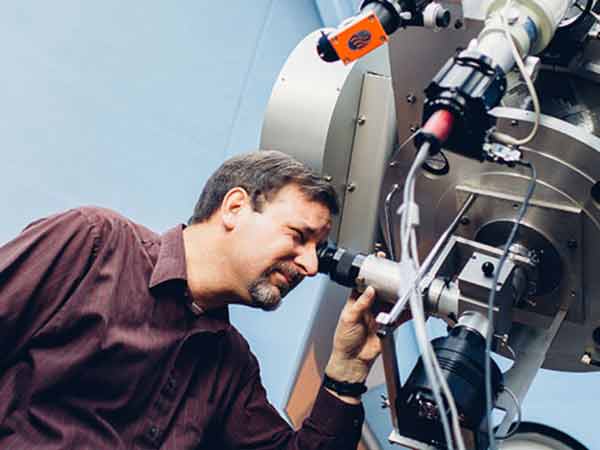
Grand Rapids, US (BBN) - In five years, a binary star system will merge and explode, predicted researchers from Calvin College, Apache Point Observatory, and the University of Wyoming.
Calvin College's Larry Molnar originally made the prediction in 2015 and now, in a press briefing, he has confirmed that his theory is now closer to becoming reality, reports TECH TIMES.
"It's a one-in-a-million chance that you can predict an explosion. It's never been done before," he said. According to his prediction, KIC 9832227 will merge in five years and then explode afterward.
Molnar pegged 2022 to be the year but it's possible for the merging and explosion to occur give or take a year of that.
And when the binary star explodes, it will be one of the brighter stars in the sky for a while, adding a star to the Northern Cross and becoming visible as part of the Cygnus constellation.
PREDICTING A BINARY STAR EXPLOSION
Molnar's research into KIC 9832227 started in 2013. At an astronomy conference, he was there when Karen Kinemuchi was presenting her findings after studying brightness in a star.
In the end, she posed a question: Is it pulsing or is it a binary?
Molnar's research assistant then, Daniel Van Noord, was with him and he took up the challenge of answering Kinemuchi's question, observing the star in question at Calvin's observatory.
Looking at the star's color and brightness, Van Noord was able to determine that it was a binary.
More specifically, a contact binary, where two stars have a common atmosphere.
Think two peanuts in one shell.
Guided by Kepler satellite data from Kinemuchi, Van Noord came up with an exact orbital period for KIC 9832227 and realized that it was slightly less that what earlier data showed.
This reminded the researchers of work done by Romuald Tylenda on another star, the V1309 Scorpii, which presented unexpected behavior before it exploded unexpectedly back in 2008 and gave birth to a red nova.
According to pre-explosion data, V1309 was a contact binary system as well, and had an orbital period that decreased at an increasingly rapid rate.
This pattern is what the researchers used to interpret their work on KIC 9832227.
It was at the 2015 American Astronomical Society meeting that Molnar formally presented their prediction, saying that KIC 9832227 is possibly another V1309 Scorpii.
Before that, they studied the binary star further for two years, carrying out two strong observational tests to rule out alternative interpretations.
WAITING GAME
Now, Molnar and colleagues are planning on using the coming years to further study KIC 9832227 so that they'll know what exact conditions will lead up to the merging and explosion.
To cover all bases, the researchers will be relying on a comprehensive range of wavelengths that will entail the use of the XMM-Newton spacecraft, the Infrared Telescope Facility, and the Very Large Array.
What's also great, according to Molnar, is that anyone can take part in anticipating KIC 9832227's explosion.
Amateur astronomers can check the orbital timing themselves and measure brightness variations to determine if the binary star's activities are aligned with the predicted schedule or not.
BBN/MS/ANS